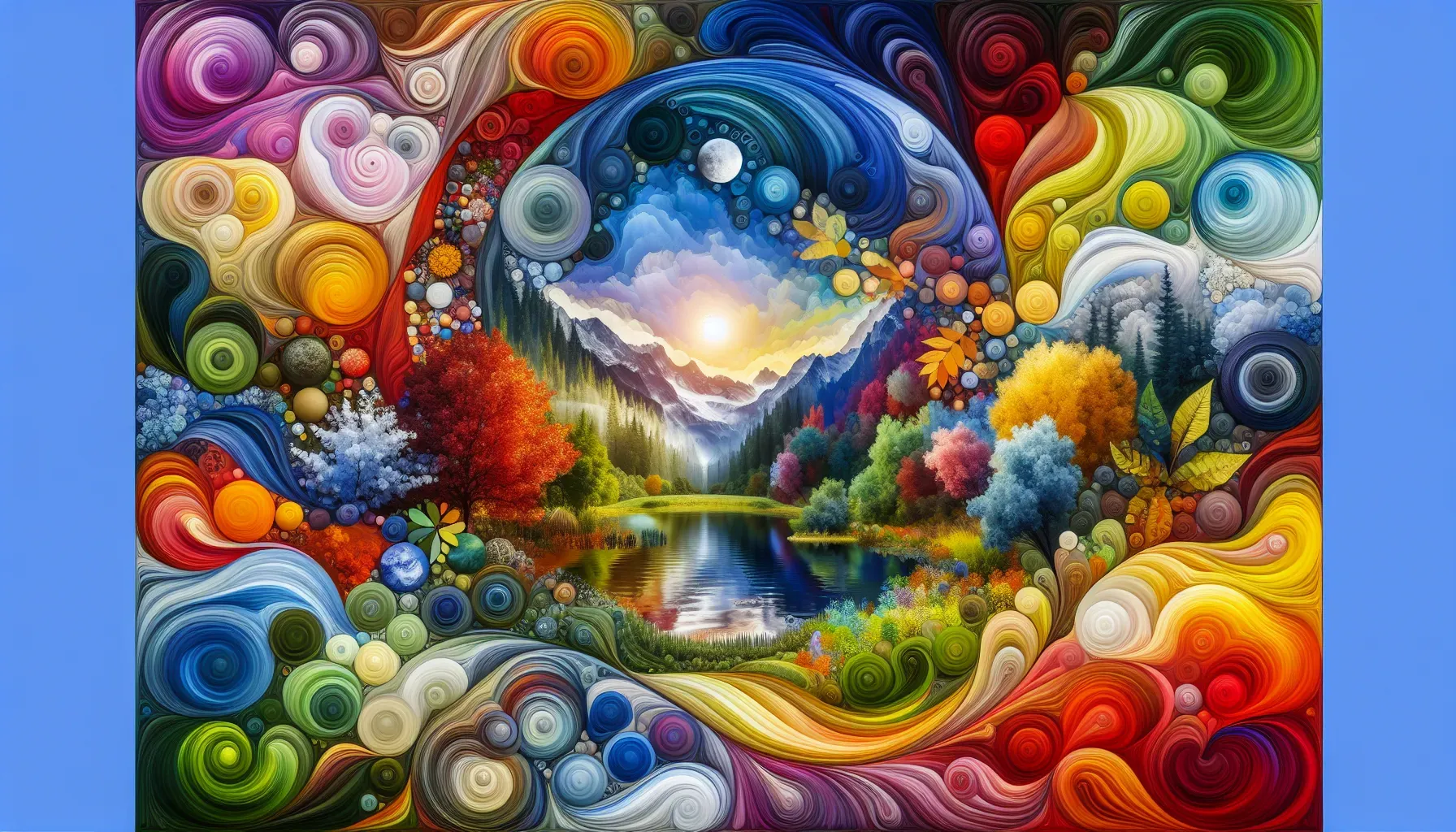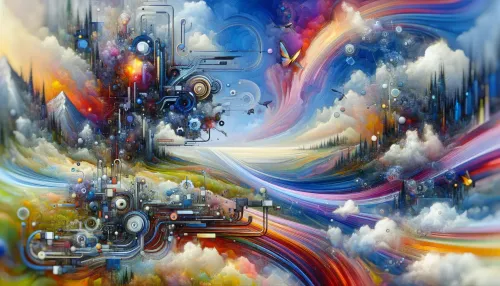The Color Psychology of Digital Marketing: Understanding the Impact on Consumer Behavior

Digital marketing is a complex field that involves numerous elements, including visual content, design, and branding strategies. One often overlooked aspect of digital marketing is the impact of color psychology on consumer behavior. In this article, we will delve into the science of color psychology, its influence on consumer perception and decision-making, and how marketers harness this knowledge to create compelling marketing strategies.
The Importance of Color Psychology in Digital Marketing
Colors have a profound effect on human emotions, behaviors, and perceptions. When it comes to digital marketing, understanding how different colors can influence consumer decisions is crucial for creating effective campaigns. Research suggests that colors evoke specific emotional responses and can significantly impact purchasing decisions. For example, vibrant and warm colors like red and orange are often associated with energy and excitement, while cooler tones like blue and green convey a sense of calm and trustworthiness. By understanding these associations, marketers can strategically leverage color to influence consumer perceptions and drive desired actions.
How Colors Influence Consumer Perception and Decisions
Psychological studies have demonstrated that individuals develop distinct preferences for certain colors based on their personal experiences, cultural background, and even biological factors. These preferences are often linked to emotional responses, meaning that specific colors can evoke feelings of comfort, joy, or even unease in consumers. Furthermore, the use of color in marketing materials can trigger subconscious associations with certain brands or products, shaping consumers' attitudes and purchasing decisions. By leveraging the science behind color preferences and emotional responses, marketers can design visual content that resonates with their target audience on a profound level.
The Science of Color Preferences and Emotional Responses
In digital marketing, every visual element serves as an opportunity to communicate brand messages and evoke specific reactions from consumers. By incorporating color psychology into their design strategies, marketers can intentionally steer consumer perceptions towards favorable outcomes. For instance, using warm colors in calls-to-action (CTAs) can create a sense of urgency and prompt immediate responses, while implementing calming hues in product images may instill trust and reliability in potential customers. Such intentional usage of colors enables marketers to shape consumer reactions in alignment with their marketing objectives.
Colors can subconsciously influence how consumers perceive brands and their offerings. For instance, a brand's choice of primary colors in its logo or website design can convey specific brand attributes such as innovation, dependability, or affordability. Additionally, color schemes that align with a brand's identity can evoke positive associations among consumers, fostering brand loyalty and influencing purchase intentions. It is vital for marketers to recognize the subconscious effects of colors and strategically integrate them into their digital marketing efforts to positively impact brand perception and purchase decisions.
Using Color Psychology to Drive Consumer Reactions
Successful digital marketers understand the significance of establishing strong connections with their audience through compelling visual content. By incorporating color psychology into their branding and communication strategies, they can effectively resonate with their target demographic. This involves aligning color choices with the intended brand personality and values while considering the emotional impact on the audience. By doing so, marketers can cultivate deeper connections with their audience by leveraging the psychological power of colors to convey meaningful messages and elicit desired responses.
Related Article: Digital Marketing Decoded: The Art and Science of Online Influence
The Subconscious Impact of Colors on Brand Perception
While certain colors may hold universal meanings, it is essential for digital marketers engaged in global campaigns to consider cultural and contextual nuances associated with colors. Different cultures ascribe varying symbolisms to colors; what may signify passion and vitality in one culture could convey mourning or negativity in another. This underscores the importance of conducting thorough research on color symbolism across target markets to ensure that marketing materials are culturally sensitive and resonate positively with diverse audiences. Adapting color choices to align with cultural nuances is imperative for crafting effective global marketing strategies.
Building Connections Through Color in Marketing Strategies
As brands strive to differentiate themselves in a saturated digital landscape, establishing a distinct brand identity becomes paramount. Color plays a pivotal role in this endeavor as it aids in building recognizable visual identities for brands. Consistent use of specific colors across various touchpoints fosters immediate recognition among consumers while evoking emotional associations tied to the brand's values and promises. By integrating carefully selected color palettes into brand identities, marketers can establish enduring connections with consumers based on shared emotions and experiences associated with those colors.
The strategic use of hues, tones, and shades within marketing visuals enables marketers to craft compelling narratives that resonate with audiences. Hues can be utilized to convey specific emotions or create focal points within visual content. Tones play a crucial role in establishing visual harmony and can be manipulated to evoke desired moods or atmospheres. Meanwhile, shades add depth and dimension to visuals, enhancing overall aesthetics while influencing viewer perceptions. By meticulously considering these elements in their visuals, marketers can captivate audiences through sophisticated color compositions that amplify brand messaging and drive engagement.
Related Article: Traditional vs. Digital: Advertising Preferences Across Cultures
Cultural Nuances in Color Psychology for Global Marketing
Through an understanding of the intricate relationship between color psychology and consumer behavior in digital marketing, marketers can leverage this knowledge to create impactful campaigns that resonate deeply with their target audience.
Frequently Asked Questions
Color significantly impacts consumer perception by evoking specific emotional responses. For instance, warm colors like red can create excitement, while cooler tones like blue promote calmness and trust. Marketers leverage these associations to design effective campaigns that resonate with consumers, guiding their purchasing decisions through strategic color choices.
Color preferences are shaped by personal experiences, cultural backgrounds, and biological factors. These preferences often trigger emotional responses, influencing how consumers feel about brands or products. Understanding these psychological aspects allows marketers to create visuals that align with target audience emotions, enhancing engagement and brand connection.
Cultural nuances in color psychology are crucial for global marketing strategies because colors can have different meanings across cultures. What signifies positivity in one culture may represent negativity in another. Marketers must research these associations to ensure their campaigns resonate appropriately with diverse audiences and avoid misunderstandings.
Marketers can engage audiences by strategically using hues, tones, and shades in their visuals. Different hues evoke specific emotions, while tones establish visual harmony. Shades add depth to designs, enhancing aesthetics and influencing viewer perceptions. By thoughtfully combining these elements, marketers can create compelling narratives that attract and retain audience attention.
Color plays a vital role in establishing brand identity by creating recognizable visual elements. Consistent use of specific colors fosters immediate recognition among consumers and evokes emotional associations tied to the brand's values. This connection helps differentiate brands in a crowded market, enhancing loyalty and encouraging repeat purchases.
Yes, color psychology can significantly influence purchase intentions. The choice of colors in marketing materials can evoke subconscious associations that shape consumer attitudes towards products. For example, warm colors may create urgency, prompting immediate action, while calming colors can instill trust, ultimately affecting a consumer's decision to buy.
Check Out These Related Articles

Navigating the Dynamic Landscape of Digital Marketing: Insights from Professionals

Digital Marketing Demystified: Your Essential Guide to Reaching Your Target Audience

Global Economic Impacts of Digital Marketing Success Stories

